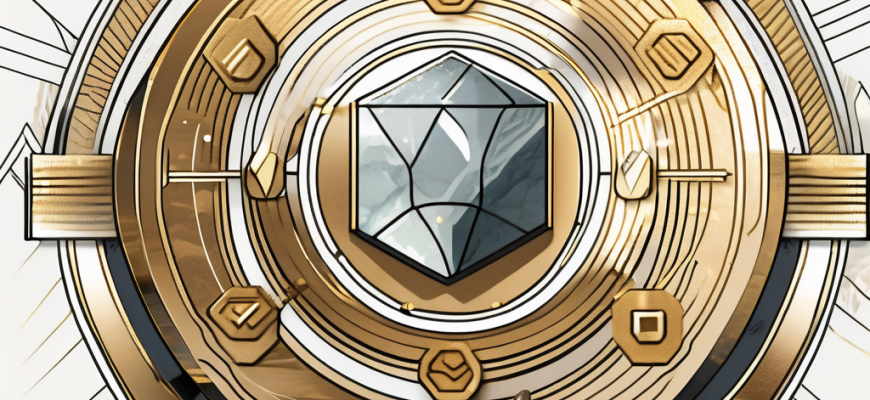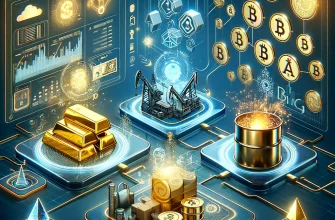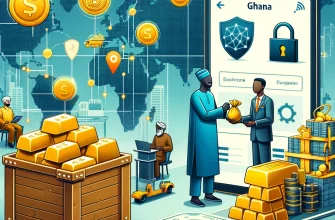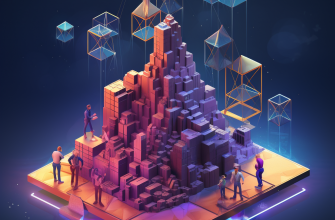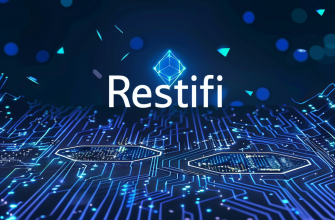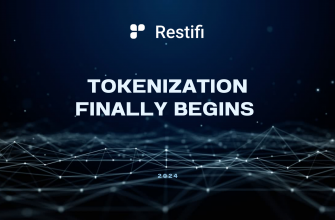Tokenized Gold is revolutionizing the mining and commodity sector by introducing a new way to invest in and trade gold. This innovative platform leverages the power of blockchain technology to provide a secure and efficient solution for tokenizing gold assets. In this article, we will explore the concept of tokenization, the rise of tokenized gold, the role of blockchain in tokenization, the process of tokenizing gold, and the impact of tokenized gold on the global economy.
- Understanding the Concept of Tokenization
- The Basics of Tokenization
- Tokenization in the Mining and Commodity Sector
- The Rise of Tokenized Gold
- The Role of Blockchain in Tokenization
- Blockchain Technology Explained
- Blockchain and Tokenization: A Perfect Match
- The Process of Tokenizing Gold
- Steps in Tokenizing Gold
- Security Measures in Tokenizing Gold
- The Impact of Tokenized Gold on the Global Economy
- Tokenized Gold and Global Trade
- Future Predictions for Tokenized Gold
Understanding the Concept of Tokenization
Tokenization is the process of representing real-world assets, such as gold, on a blockchain through the use of digital tokens. These tokens serve as digital representations of the underlying assets and can be bought, sold, and traded. Tokenization allows for fractional ownership, making it easier for investors to diversify their portfolios and gain exposure to different asset classes.
The Basics of Tokenization
At its core, tokenization involves issuing tokens that are backed by physical gold reserves. These tokens are created and managed on a blockchain platform, enabling transparent and secure transactions. Each token is typically pegged to a specific quantity of gold, ensuring that the value of the token aligns with the market price of gold.
Tokenization has gained significant traction in recent years due to its potential to revolutionize the way assets are bought, sold, and traded. By digitizing assets and representing them as tokens on a blockchain, tokenization offers increased liquidity, accessibility, and efficiency in the financial markets.
One of the key advantages of tokenization is the ability to fractionalize assets. Traditionally, investing in assets like gold required large capital investments. However, with tokenization, investors can purchase fractions of a token, allowing them to own a portion of an asset without having to buy the whole thing. This opens up investment opportunities to a wider range of individuals, democratizing access to asset classes that were previously only available to a select few.
Furthermore, tokenization provides enhanced transparency and security. By utilizing blockchain technology, tokenized assets can be tracked and verified in real-time, ensuring that ownership is accurately recorded and transactions are securely executed. This eliminates the need for intermediaries and reduces the risk of fraud or manipulation.
Tokenization in the Mining and Commodity Sector
In the mining and commodity sector, tokenization offers numerous benefits. It allows miners and commodity producers to unlock liquidity by converting their physical assets into tokenized representations. This opens up new avenues for financing and investment, allowing smaller investors to participate in the sector and reducing reliance on traditional financial intermediaries.
Tokenization also provides increased transparency and traceability in the mining and commodity supply chains. By tokenizing assets, each transaction can be recorded on the blockchain, creating an immutable and auditable record of ownership and transfer. This helps to combat issues such as illegal mining, smuggling, and unethical practices, as the provenance of the assets can be easily traced and verified.
Additionally, tokenization can facilitate the trading of commodities on a global scale. By representing commodities as tokens, they can be easily bought and sold across borders, eliminating the need for complex and time-consuming paperwork. This opens up new markets and opportunities for commodity producers, allowing them to reach a wider customer base and potentially increase their profits.
Furthermore, tokenization can enable the creation of innovative financial products and services in the mining and commodity sector. For example, tokenized assets can be used as collateral for loans, allowing miners and commodity producers to access capital more easily. This can help to fuel growth and development in the sector, driving innovation and increasing productivity.
In conclusion, tokenization is a transformative concept that has the potential to revolutionize the way assets are bought, sold, and traded. By digitizing real-world assets and representing them as tokens on a blockchain, tokenization offers increased liquidity, accessibility, transparency, and security. In the mining and commodity sector, tokenization can unlock liquidity, enhance transparency, facilitate global trading, and enable the creation of innovative financial products and services. As the technology continues to evolve, tokenization is expected to play a significant role in shaping the future of finance and investment.
The Rise of Tokenized Gold
Tokenized Gold has gained traction in recent years as investors seek alternative investment options and digital assets gain mainstream acceptance. But what exactly is tokenized gold?
Tokenized Gold represents ownership of physical gold stored in vaults. Each token is backed by a specific amount of gold, providing investors with a secure and efficient way to invest in gold without the need for physical ownership. Tokenized Gold combines the benefits of gold ownership, such as a hedge against inflation and a safe haven asset, with the advantages of blockchain technology.
Investing in tokenized gold offers numerous advantages. One of the key benefits is liquidity. Unlike traditional gold investments, tokenized gold can be bought, sold, and traded instantly on blockchain-powered exchanges. This allows investors to access their gold holdings at any time without the need for physical delivery or storage.
Moreover, tokenized gold eliminates many of the challenges associated with traditional gold investments. For instance, high transaction costs are significantly reduced as blockchain technology streamlines the process. Additionally, storage fees become a thing of the past, as investors no longer need to worry about finding a secure location to store their physical gold. The risk of theft or damage is greatly diminished.
Another advantage of tokenized gold is the elimination of counterparty risk. With traditional gold investments, there is always the concern of relying on a trusted third party to hold and manage the gold. However, with tokenized gold, the ownership is recorded on the blockchain, ensuring transparency and reducing the risk of fraud or mismanagement.
Furthermore, tokenized gold opens up investment opportunities to a wider range of individuals. In the past, investing in gold required significant capital and expertise. Tokenized gold allows for fractional ownership, meaning investors can buy as little or as much gold as they desire, making it more accessible to a broader audience.
As digital assets continue to gain mainstream acceptance, tokenized gold is poised to become an increasingly popular investment option. Its combination of the benefits of gold ownership and the advantages of blockchain technology make it an appealing choice for investors looking for a secure, transparent, and efficient way to invest in gold.
The Role of Blockchain in Tokenization
Blockchain technology is the backbone of tokenization platforms, providing the necessary infrastructure for creating, issuing, and managing digital tokens. But what exactly is blockchain?
Blockchain Technology Explained
Blockchain is a decentralized, distributed ledger that records all transactions across a network of computers. Each transaction, or block, is linked to the previous one, forming a chain of blocks. This ensures that the data stored on the blockchain is tamper-proof and transparent.
Blockchain and Tokenization: A Perfect Match
Blockchain technology is particularly well-suited for tokenization due to its transparency, security, and immutability. By leveraging blockchain, tokenization platforms can provide investors with real-time access to information about the underlying assets, such as gold reserves, ensuring trust and transparency in the system.
The Process of Tokenizing Gold
Tokenizing gold involves several key steps that ensure the integrity and security of the process.
Steps in Tokenizing Gold
The first step in tokenizing gold is establishing a legal framework that governs the issuance and management of tokens. This includes defining the rights and responsibilities of the token issuers, token holders, and platform operators.
Once the legal framework is in place, the next step is to identify and verify the gold reserves that will back the tokens. This involves conducting rigorous audits and inspections to ensure that the gold is authentic and meets the required standards.
After verifying the gold reserves, the tokens can be created and issued on a blockchain platform. The tokens are typically issued in a 1:1 ratio with the underlying gold, ensuring that each token represents a specific quantity of the precious metal.
Security Measures in Tokenizing Gold
Security is paramount in tokenizing gold. Tokenization platforms employ various security measures, such as multi-signature wallets, cold storage solutions, and regular audits, to safeguard the gold reserves and protect the integrity of the tokens.
The Impact of Tokenized Gold on the Global Economy
The advent of tokenized gold is expected to have a significant impact on the global economy.
Tokenized Gold and Global Trade
Tokenized gold has the potential to revolutionize global trade by making gold more accessible and tradable. As tokenized gold can be bought, sold, and traded instantly, it eliminates many of the barriers associated with physical gold transactions, such as costly transportation and storage.
This increased liquidity and efficiency in the gold market can have far-reaching effects on international trade, as gold is a crucial component of many industries and serves as a store of value across different cultures and economies.
Future Predictions for Tokenized Gold
The future of tokenized gold looks promising. As the technology matures and more investors embrace digital assets, tokenized gold is expected to become a mainstream investment option and a key driver of global economic growth.
Furthermore, the tokenization of other commodities, such as silver, platinum, and oil, is also on the horizon, promising even greater opportunities for investors and businesses alike.
In conclusion, tokenized gold is the ultimate tokenization platform for mines and commodities, providing investors with a secure and efficient way to invest in and trade gold. Through blockchain technology, tokenized gold offers liquidity, transparency, and cost-effectiveness, revolutionizing the mining and commodity sector and impacting the global economy. As the world embraces digital assets, the future of tokenized gold looks bright, paving the way for a new era of investment and trade.

